Pingtan makes breakthrough in archaeology
Pingtan Net | Updated:2018-10-31
A burial site dating back to the China’s Southern Dynasties 1500 years ago and ruins of the Shang and Zhou Dynasties 3000 years back were uncovered recently in Pingtan, Southeast China’s Fujian Province by the archaeologists of Xiamen University. This is the first time tomb ruins were unearthed in Pingtan.
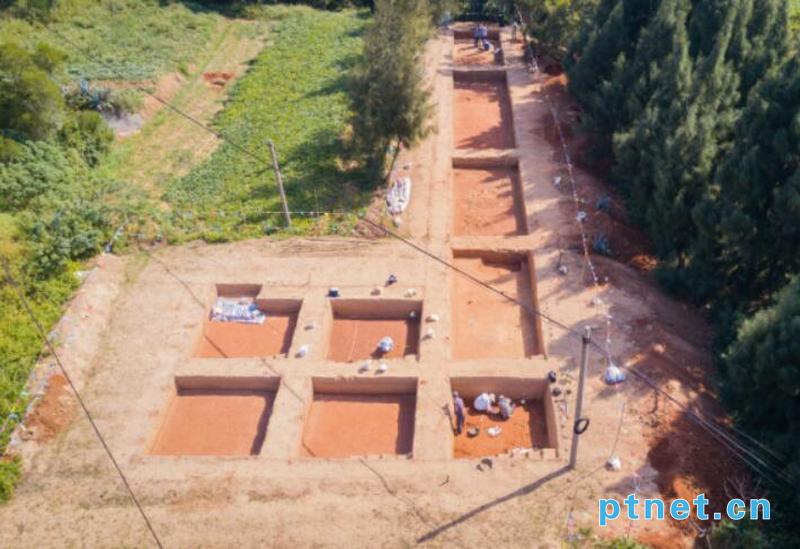
The ruins of Shang and Zhou Dynasties dating back 3000 years uncovered in Rongshan Village, Southeast China’s Pingtan Island [Photo/ptnet.cn]
The tomb ruins

The ancient tomb dating back to the Southern Dynasties [Photo/ptnet.cn]
The excavated tomb measuring 4.3 meters long and 0.6 meter wide was built in the mountains in Hongwei Village. The tomb piled up with blue-gray bricks was smooth and exquisite.

The cultural relics excavated in the ancient tomb [Photo/ptnet.cn]
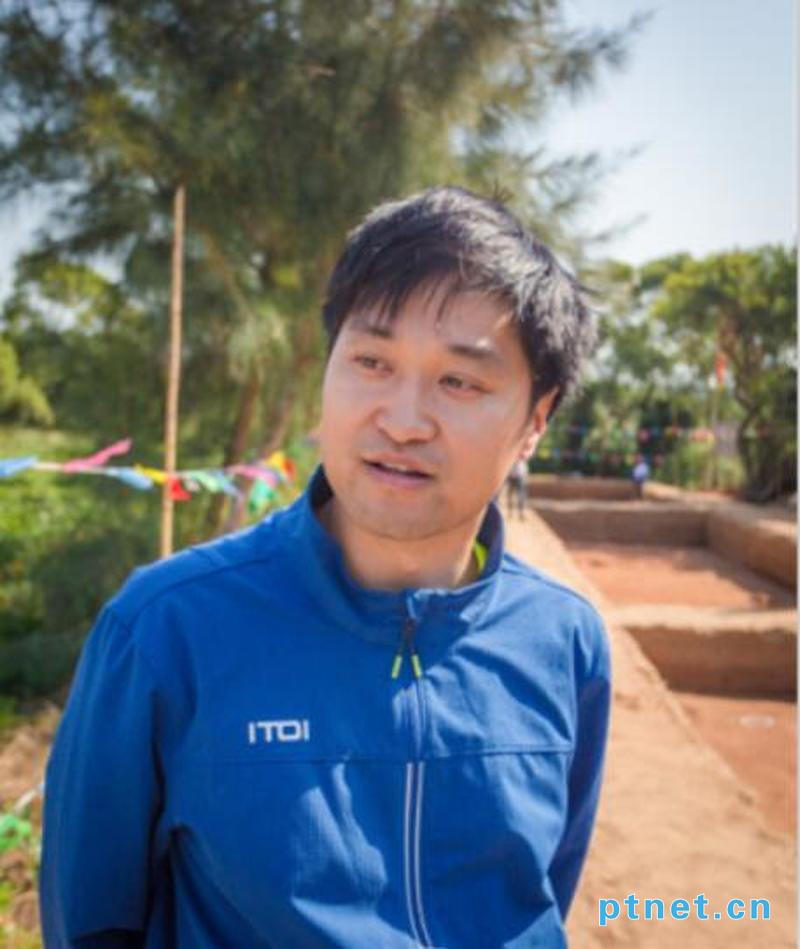
Zhang Wenjie, Deputy Director of the History Department of Xiamen University [Photo/ptnet.cn]
From its architectural outlook - the short pavement, the back burial chamber and the arched roofing, the tomb looks like a typical one in the Southern Dynasties. According to our deduction, it should be a tomb built in 500 AD from the Liang Dynasty of the Southern Dynasties,” Zhang Wenjie, an associate professor from the History Department of Xiamen University clarified.
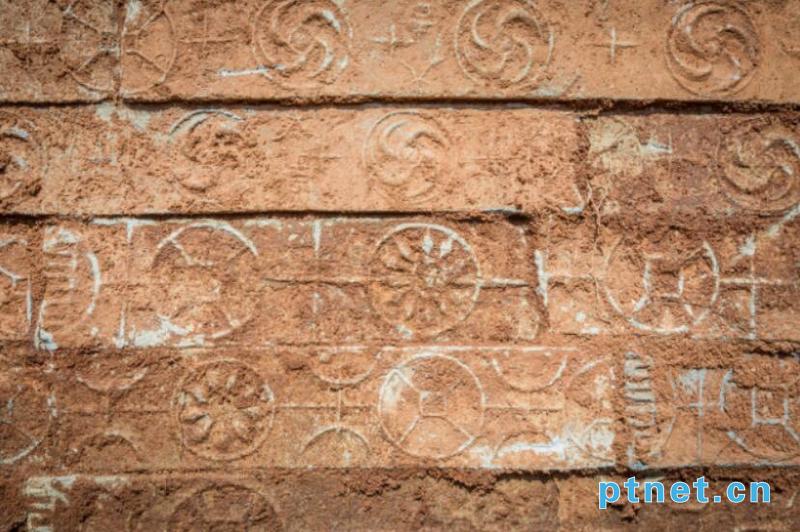
Patterns on the tomb bricks remain clearly visible. [Photo/ptnet.cn]
There are patterns of Wuzhu, the then currency in Southern Dynasties, and lotus, representing flourishing Buddhism back then, imprinted on the bricks. Though it has been more than 1,500 years of history, the patterns are still intact.
“Since no inscriptions are found in the tomb, we have no exact clue of the identity of the tomb owner. But judging from the tomb’s exquisiteness, we can say the owner was among the wealthy class,” said Zhang.
Ruins of the Shang and Zhou Dynasties
The excavation plan of the ruins of the Shang and Zhou Dynasties in Rongshan Village will cover about 800 square meters. Many relics are still left uncovered in the original building with a few pillar holes by the shed. At the excavation site, the team members are working punctiliously by digging and brushing off sands from the relics.
The ruins of Shang and Zhou Dynasties in Rongshan Village are planned to be excavated about 800 square meters. There are many relics buried in the original building as well as the pillar ruins left by the shed setup. At the excavation site, the team are working punctiliously on digging and brushing off sands from the relics.
“For the first time, 3 dwellings were found here. The settlement layout is relatively clear,” introduced Zhang.
A well around the normal height of a person was also discovered. The soil around the well is loose which allows the excavation team to dig deeper by another 2-3 meters, which would eventually lead to some water supply tools.
Some cultural relics have been unearthed in the pit nearby. In addition to the pottery pieces, there are also some unbroken pottery bowls covered in mud.
“The broken ceramic shards are gathered here and arranged in a rectangular shape. These are in nature stamped hard potteries decorated with rope and geometrical figures, most probably used to hold wine or water,” Zhang Wenjie said, adding that these items have a history of about 3,000 years inferred from the excavated pottery, utensils and soil.
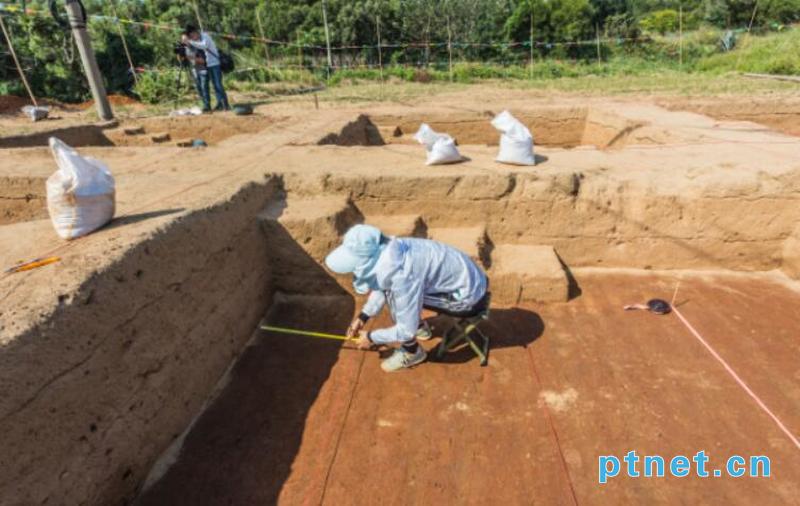
Archaeologists surveying on the excavation site [Photo/ptnet.cn]
Zhang Wenjie expressed that the soil in Pingtan is mostly sandy and the deposits are thin, hence excavation work requires more patience and manual labor.
Zhang plans to work till December, for he believes that ancients preferred being buried in groups and ruins are supposed to be more complete as the excavation progresses up in the mountain, after which indoor work will continue which would involve sorting, drawing and splicing appliances. Archaeologists will be looking for more relevant materials, which may contribute to the study of the worldwide subject-the origin of the Austronesian.
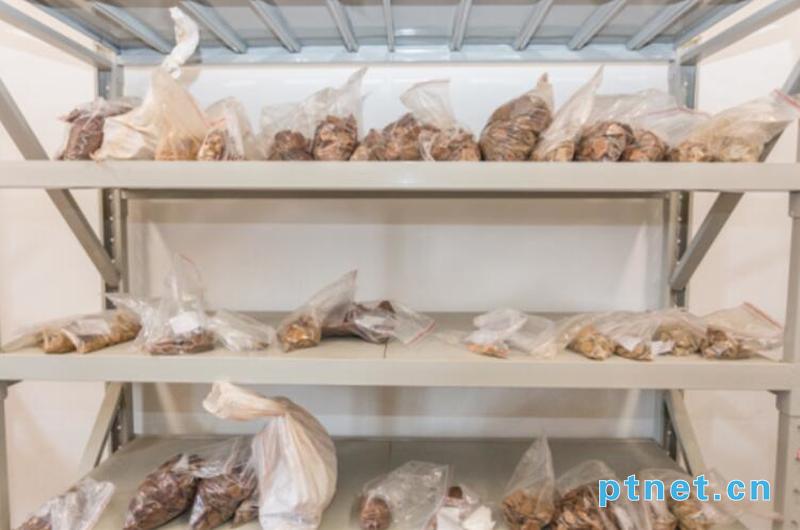
The cultural relics excavated in Rongshan Village [Photo/ptnet.cn]

